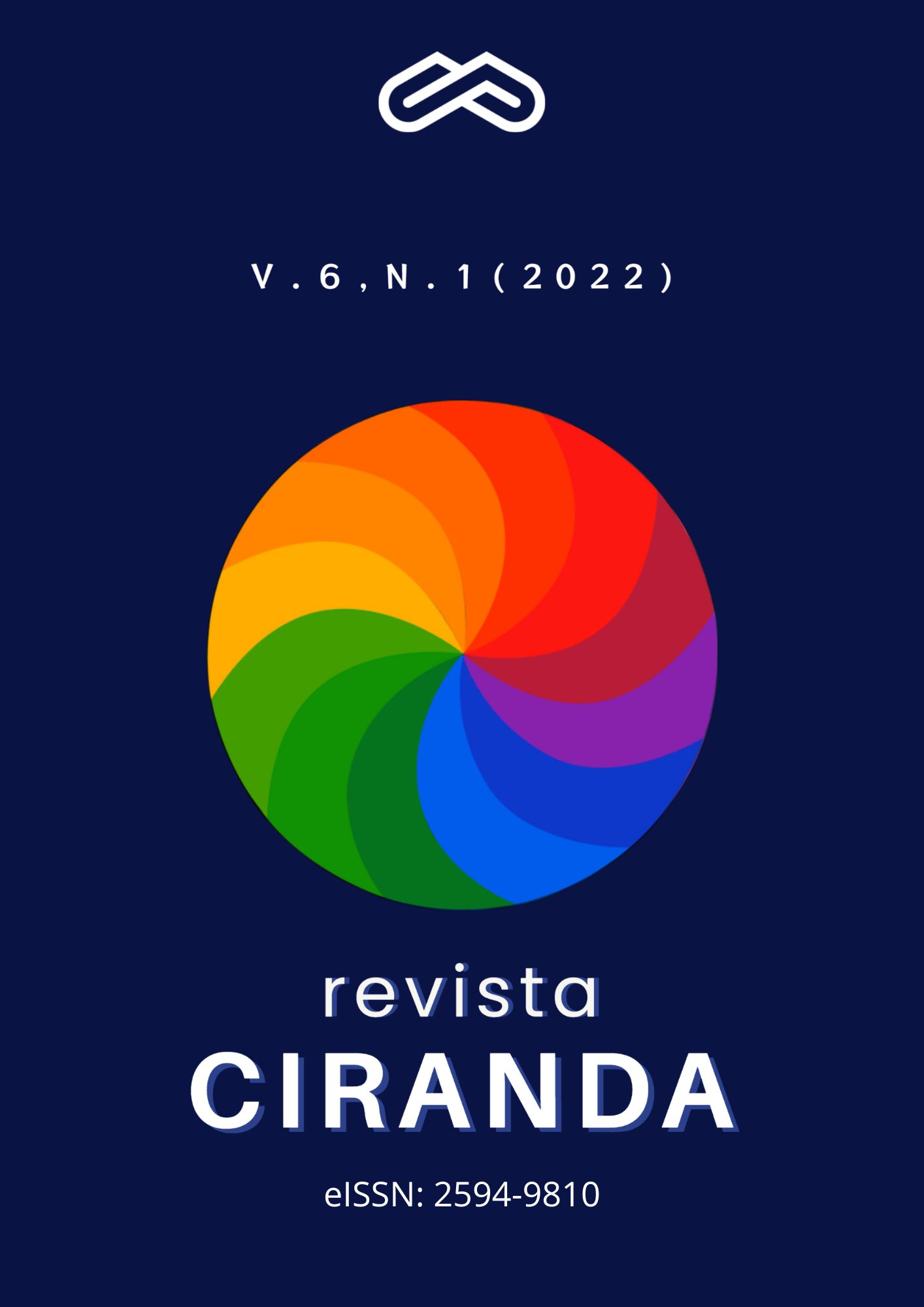DIGITAL TECHNOLOGIES: REFLECTIONS AND POSSIBILITIES OF IMPLEMENTATION IN TEACHING
DOI:
10.46551/259498102022003Keywords:
Digital technology. Teaching. Educational Policy. Internet of Things.Abstract
This article aimed to identify digital technologies that may be feasible and consequently
implemented for teaching in Brazil. In order to respond to this scenario, a documental and
bibliographic research was used for the survey, data collection and data analysis in a qualitative way.
As a result of the research we identified that the smartphone is the most viable digital device to be
used. This is justified because it is the digital device most used by students to study. In addition, the
percentage density of the population with a cell phone reaches 96%, and those with internet access
even in the lower classes is on average 84%. Furthermore, it was found that 99% of the Brazilian
municipalities have 3G coverage and 94% have 4G, which reflects the possibility of use in almost the
entire country. It is also noteworthy that the 5G internet is embryonic in Brazil, however, through its
speed and the Internet of Things, it promises a revolution that will undoubtedly reflect on education.
We conclude, then, that educational policies for the insertion of digital technologies in education must
be based on the country's reality and, thus, mitigate the waste of public funds.
Downloads
References
BARROS, E. MaxiEduca. Entenda a diferença e a tecnologia por trás da conexão do seu
celular, 2018. Disponível em: <https://blog.maxieduca.com.br/sigla-diferenca-4g/>. Acesso
em: 05 maio 2020.
BEHRENS, M. A. O paradigma emergente e a prática pedagógica. Curitiba: Editora
Vozes, 2013.
BRASIL. Anatel. Relatório Anual de Gestão, 2019. Disponível em:
<https://sei.anatel.gov.br/sei/modulos/pesquisa/md_pesq_documento_consulta_externa.php?e
EP-wqk1skrd8hSlk5Z3rN4EVg9uLJqrLYJw_9INcO59jtrWc1-S4nfX-SeHrqZ0yJ4y5VQfXU
s0tAawmhcxMpvx_M5wnV-y55u7TZxpVC1wbPvX8lqe4T93KoIvcrei>. Acesso em: 03
maio 2020.
BRASIL. Anatel. Telefonia Móvel, 2020. Disponível em:
<https://www.anatel.gov.br/paineis/acessos/telefonia-movel>. Acesso em: 04 maio 2020.
BRASIL. CGI.br. Sobre o CGI.br, 2020. Disponível em: <https://www.cgi.br/sobre/>.
Acesso em: 03 maio 2020.
BRESSAN, R. T. Dilemas da rede: Web 2.0, conceitos, tecnologias e modificações. Intercom
– Sociedade Brasileira de Estudos Interdisciplinares da Comunicação XXX Congresso
Brasileiro de Ciências da Comunicação. Santos: [s.n.]. 2007. p. 1-13.
CABRAL, F. M. S.; CARVALHO, M. A. V. D.; RAMOS, R. M. Dificuldades no
relacionamento professor/aluno: um desafio a superar. Paidéia, Ribeirão Preto, v. 14, n. 29, p.
-335, dez 2004. Disponível em:
<http://www.scielo.br/scielo.php?script=sci_arttext&pid=S0103-863X2004000300008&lng=e
n&nrm=iso>. Acesso em: 29 maio 2020.
CGI.BR. Cetic.br. https: //cetic.br/sobre/, 2020. Disponível em: <https://cetic.br/sobre/>.
Acesso em: 03 maio 2020.
COSCARELLI, C. V. O uso da informática como instrumento de ensino-aprendizagem.
Presença Pedagógica, Belo Horizonte, p. 36-45, mar/abr. 1998.
DEMO, P. Educar pela pesquisa. Campinas: Autores Associados, 10ª ed. 2015.
DEUS, J. M. D. et al. Aula centrada no aluno versus aula centrada no professor: desafios para
mudança. Rev. bras. educ. med., Rio de Janeiro, v. 38, n. 4, p. 419-426, dez 2014. Disponível
em:
<http://www.scielo.br/scielo.php?script=sci_arttext&pid=S0100-55022014000400002&lng=e
n&nrm=iso>. Acesso em: 29 maio 2020.
FERNÁNDEZ, A. A inteligência aprisionada. Porto Alegre: Artes Médicas, 1991.
FLORES, J. B. Um computador por aluno: possibilidades de inclusão e letramento digital.
Espaço Pedagógico, Passo Fundo, v. 20, n. 2, p. 313-320, jul./dez. 2013.
GIL, A. C. Como elaborar projetos de pesquisa. 4. ed. São Paulo: Atlas, 2002.
GUTIERREZ, F.; PRIETO, D. A mediação pedagógica: a educação a distância alternativa.
São Paul: Papirus, 1994.
LEÃO, D. M. M. Paradigmas Contemporâneos de Educação: Escola Tradicional e Escola
Construtivista. Cad. Pesqui., São Paulo, n. 107, p. 187-206, jul. 1999. Disponível em:
<http://www.scielo.br/scielo.php?script=sci_arttext&pid=S0100-15741999000200008&lng=e
n&nrm=iso>. Acesso em: 30 mar. 2021.
LÉVY, P. Cibercultura. tradução de Carlos Irineu da Costa. São Paulo: Ed. 34, 1999.
MORAN, J. M.; MASETTO, M. T.; BEHRENS, M. A. Novas tecnologias e mediação
pedagógica. Campinas: Papirus, 2000.
OLIVEIRA, E. S. G. Adolescência, internet e tempo: desafios para a Educação. Educ. rev.
[online], Curitiba, n. 64, p. 283-298, abr./jun. 2017. ISSN 10.1590/0104-4060.47048.
Disponível em: <https://www.scielo.br/pdf/er/n64/0104-4060-er-64-00283.pdf>. Acesso em:
maio 2020.
PINTO, M. L. D. S. Práticas Educativas Numa Sociedade Global. Porto: ASA Editores,
SANTOS, J. D. Interfaces para Dispositivos Móveis. Dissertação de Mestrado em
Tecnologia da Inteligência e Design Digital. São Paulo. PUCSP. São Paulo, p. 99. 2013.
SANTOS, M. et al. Guia de Utilização de Plataformas de Aprendizagem em ambientes
escolares - Orientações para a dinamização de áreas de trabalho entre professores.
Lisboa: Centro de Competência RTE da Faculdade de Ciências da Universidade de Lisboa,
SILVA, T. D. O.; SILVA, L. T. G. Os impactos sociais, cognitivos e afetivos sobre a geração
de adolescentes conectados às tecnologias digitais. Rev. psicopedag., São Paulo, v. 34, n.
, p. 87-97, 2017. Disponível em:
<http://pepsic.bvsalud.org/scielo.php?script=sci_arttext&pid=S0103-84862017000100009&ln
g=pt&nrm=iso>. Acesso em: 28 maio 2020.
VALENTE, J. Empresa Brasileira de Comunicação. Celular se torna principal forma de
acesso à internet no Brasil, 2018. Disponível em:
<https://agenciabrasil.ebc.com.br/geral/noticia/2018-07/celular-se-torna-principal-forma-de-a
cesso-internet-no-brasil>. Acesso em: 06 maio 2020.
VANDRESEN, A. S. R. Web 2.0 e educação: Uso e Possibilidades. I Seminário Internacional
de Representações Sociais, Subjetividade e Educação - SIRSSE. Curitiba: PUCPR. 2011. p.
-12667.




.png)



